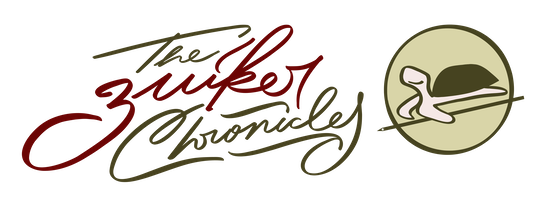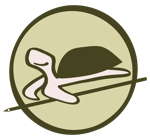Looking down on Cleveland
by Anton Zuiker on November 11, 2015
Cleveland is often the butt of jokes, and sitting at a window seat inside a hip coffeeshop called Pour Cleveland, looking out onto the grimy downtown sidewalk, you wonder if perhaps that’s deserved.
But finish your very good cappuccino and walk East on Euclid Avenue, to the historic bank building newly repurposed for an upscale urban grocery store. Inside Heinen’s, the half-stripped tiled floor between the gourmet aisles makes no attempt to mask the city’s age. Find your lunch, take a seat in the echoing cafe, and watch Clevelanders and tourists alike stream in. An elderly nun, in white cassock and black headscarf, shuffles gingerly into the space, pauses, looks heavenly to take in the beautiful rotunda. ‘Wow,’ you see her say. You look up again, smile, too.

Cleveland Trust Rotunda (June 2015)
A bus takes you down Euclid to University Circle and the new cube that is the home of the Museum of Contemporary Art. You hope to say hi to the director, who once cooked dinner for you and one of the city’s preeminent art collectors, but she’s just started her sabbatical (you’re about to end yours). Climbing the steps to the gallery, you notice ‘Keep your promises’ nailed onto the wall. You often jot that same phrase on the opening page of your pocket notebooks. You’re back in Cleveland today because you promised yourself you’d explore the city by foot.
At night, on the city’s near west side, on a block of Cleveland that was recently rough and forlorn, you walk into bustling Platform Beer Company. A friend is waiting, with a brew sampler and stories of more development on the books. He tells you to look down to the narrow wood slats that remain from when this building was a bowling alley. That friend, ever the booster for his city, also points you to a coffeeshop that’s hub of yet another revitalizing slice of Cleveland, this one dubbed Hingetown. Tomorrow, you’ll step inside the former fire station there and notice an even older wood floor, and the fireman’s pole still poking through the ceiling.
Before you go home, down south, you drive over the crappiest winter-violated streets you can imagine, but stop at the smooth pavement of a new road overlooking the Cuyahoga River, not far from where it once burned, and where now the Towpath Trail is slowly snaking north toward Lake Erie. Skipping with your children along one section of the trail, finished and fabulously lined with black-eyed susans and other wildflowers, you glance up through the hulking footings of a bridge to see downtown’s skyscrapers, awaiting the national attention of a political convention next year.
If you must, look down on Cleveland. Then look up, and look about. Get around, to the coffee shops and breweries, and parks and groceries. See the city for what it is—rich in history, gritty in its perseverance, and pulsing with promise.

Downtown Cleveland from beneath the Hope Memorial Bridge
Get out
by Anton Zuiker on November 10, 2015
The Zuiker family loves the outdoors.
 For spring break two years running, Erin and I took the kids to St. Croix, in the U.S. Virgin Islands.
For spring break two years running, Erin and I took the kids to St. Croix, in the U.S. Virgin Islands.
Without laptops or cell phones for the week, we spent the hot days relaxing at the beach under the shade of sea grape trees. I floated with my children in the clear Caribbean Sea, dived to retrieve a sand dollar for each of them, and felt wealthy beyond measure as I surfaced to their smiles.
At night, with only window screens separating me from the world outside, the evening air cooled across my skin, and I stirred in my sleep when I recognized a gecko’s chirp different from the chorus that had been singing for hours.

Sprat Hall, by Malia Zuiker
Walk around
Grandpa Sisco, my mother’s father, rose most mornings at 4 a.m. to walk the streets of DeKalb, Illinois. I take my stroll midday at Duke University, where I work. I walk through the medical center, onto campus and past the chapel, into the woods and back to my cubicle in the hospital. This university is a world of its own, with a noble desire to know the wider universe, and when I sit back down to my desk I feel damn lucky to work here.
On an August vacation with family and friends to far southwest Texas, I hiked across ranchland and down blazing-hot trails in Big Bend National Park, mesmerized by the enormous vistas. We ambled into Marfa for lunch, and while the kids placed pennies on railroad tracks, I ordered pork banh mi from the Food Shark food truck.
Other days, I walked the streets of Chicago, Atlanta, Charleston, Kansas City and Boston. Walking in Cleveland’s Rocky River Valley, I glimpsed an owl—totem of Grandpa Zuiker—sitting in the beech tree above me.
Colophon
by Anton Zuiker on November 9, 2015
Zuiker Chronicles has used the Textpattern content management system since its beta days in 2004. For the 2015 redesign, I considered Foundation and UIKit and other frameworks, then settled on the Skeleton CSS boilerplate. Leo Babauta’s minimal web ethos inspired my approach to an updated site. Fonts are Concourse and Equity, and the tutorials Butterick’s Practical Typography and Interactive Guide to Blog Typography were instructive.
While this site doesn’t use any of the various publishing tools developed by Dave Winer, I am indebted to his pioneering work in blogging, podcasting, outlines and other online media. I’ve learned much from Dave through the years, including how to organize an unconference, what it means to be a natural born blogger, and the importance of narrating your work. Elsewhere, I use Fargo, and some of Dave’s newer tools. You should try one or two yourself.
Thinking of you, Vanuatu
by Anton Zuiker on March 17, 2015
This essay was originally published in 2015 on Yumi stap storian, a site I administered off and on for writing about Peace Corps Volunteers in Vanuatu.
Last week, Cyclone Pam aimed for the islands of the Republic of Vanuatu, an 82-island archipelago in the South Pacific where I served, along with my wife, Erin, as a Peace Corps Volunteer from 1997 to 1999.
We started to worry for our friends and family there. We’d seen our share of cyclones during our time there, but nothing as strong as this storm. Actually, many are saying this cyclone is the strongest ever seen in the South Pacific.
By Friday, Pam was the equivalent of a category-four hurricane, slowly churning its way down the island chain. It went over Paama, the lush, hilly 2-mile by 6-mile island where I had lived, and then the cyclone strengthened even more. When its eye went directly over the capital city, Port Vila, it was a ferocious category five, with winds gusting up to 185 mph and 9 inches of rain already washing out roads and bridges.
[image of cyclone on map]
Saturday: Pam was still tearing up the islands, and there was precious little news from Port Vila, and none from Paama and the other islands north, or Tanna and the islands south.
Sunday: Reports on Facebook and Twitter were confirming that nearly all the buildings in Vila had been damaged or destroyed. One short video from there showed people picking through their soaked belongings, and pigs rooting through the remains of the traditional bamboo-and-thatch huts and rusty shacks. A rooster sings out nearby.
Powerless to do anything about the storm, I went out walking near my home in North Carolina. The morning sky was clear and blue, the air warm and still, and the ground puddled and muddy from gentle rains last week. A few small snails were inching along the pavement, while crows above flew tree to tree answering each other, and through the woods came the sounds of woodpeckers knocking one after the other. Farther away, a rooster was proclaiming the morning.
When I lived on Paama, roosters would strut and crow through the day, and from my classroom at the elementary school where I taught, I could hear that sound echoing through the coconut palms and mango trees.
The rooster call was a defining sound of my South Pacific experience — cookarootoo, as the Ni-Vanuatu say. That was an amusing difference, since I’d grown up with the American way of mimicking a rooster: cock-a-doodle-do.
Another cultural difference: Ni-Vanuatu can communicate with their eyebrows, often to mean ‘yes’ but, along with a flutter of the hand, just as often to mean something more complex, such as ‘Can you help me plant my garden today?’
On Paama, most people live day to day by what they grow in their gardens on the steep hillsides. The rich volcanic soil grows some of the juiciest watermelon I’ve ever enjoyed, and the staple taro and yams that sustain the villagers. In 2013, heavy rains over Paama caused landslides that destroyed many gardens, and the people relied on emergency food aid from Australia and New Zealand.
There’s no word yet from Paama about what Pam’s winds and rains did to the villages of Liro, Lironessa, Asuas, Voravor, and Tavie, the five villages I served. But flyover assessments today are confirming that many gardens are destroyed on the islands near Paama. Many countries have already begun to send food and water and relief supplies. I hope some of that gets to my friends on Paama.
We’d like to do our part and send a box of seed packets and new clothes, and more. We will, just as soon as it’s clear the grass airstrip is ready to receive the Twin Otter airplane, or we hear that the few cargo ships survived the cyclone and can once again make their island to island runs.
Will there be roosters to welcome them? I don’t know. But in my mind I can already hear the sound that will echo through the trees when the first ship is sighted, the hwooo-wheehee called out and repeated person to person through the valley and up the hillsides. What relief the villagers will feel when they first hear and repeat that call! They will hurry down to the black-sand beach to unload the bags of rice and flour and cement, and maybe medicine and mail from faraway friends.
During my time on Paama, I, too, ran down to the beach to join the line of men carrying the normal deliveries up to dry land. As a Peace Corps Volunteer, I was there to assist them, through education, and a water project, and solar lighting for their homes. Whatever I may have accomplished then might be gone now, from time or cyclone’s winds. I wish that I could rush back to Paama to help them regroup and rebuild.
My Peace Corps service in Vanuatu lasted two challenging but quite rewarding years, years that most certainly strengthened me. My Ni-Vanuatu hosts and friends and partners were joyous, and generous, and patient and kind. The lessons they taught me — about working side by side and for the community — have inspired my life and work here in North Carolina.
Today, I’m anxiously waiting on word from Paama. But my eyebrows are up, saying yes, I will find a way to help you in your garden.
Remembering Mom and Dad
by Anton Zuiker on March 10, 2015
Kevin Zuiker created this video tribute to Francis and Clarice Zuiker:

